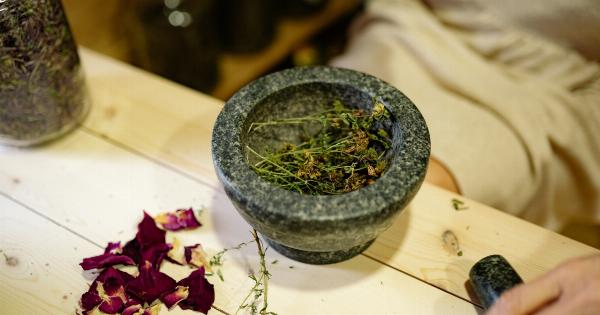Women’s reproductive health is of utmost importance for their overall well-being and quality of life.
Many factors contribute to women’s reproductive health, including hormonal balance, immune function, and the presence of beneficial microbial species in the reproductive tract. In this article, we will explore five microbial species that are essential for maintaining a healthy reproductive system in women.
Lactobacillus crispatus
Lactobacillus crispatus is a type of bacteria that is commonly found in the vaginal flora of healthy women. It plays a crucial role in maintaining vaginal pH balance and preventing the overgrowth of harmful bacteria.
This species produces lactic acid, which creates an acidic environment in the vagina, inhibiting the growth of pathogens. L. crispatus also helps to maintain a healthy microbial balance and reduce the risk of vaginal infections.
Lactobacillus jensenii
Lactobacillus jensenii is another important species that inhabits the vaginal tract. Like L. crispatus, it helps maintain the acidic pH of the vagina, preventing the growth of harmful organisms. Additionally, L.
jensenii produces hydrogen peroxide, which has antibacterial properties and can further inhibit the growth of pathogens. This bacterium also promotes the production of mucus, which acts as a protective barrier against infection.
Lactobacillus acidophilus
Lactobacillus acidophilus is a well-known probiotic species that colonizes various parts of the human body, including the vagina. It aids in maintaining a healthy vaginal environment by producing lactic acid and hydrogen peroxide. L.
acidophilus also supports the immune system and helps prevent the overgrowth of harmful bacteria and yeast. This bacterium plays a vital role in preventing vaginal discomfort, itching, and abnormal discharge.
Bifidobacterium breve
Bifidobacterium breve is a beneficial bacterium that primarily inhabits the gastrointestinal tract. However, recent research has shown its presence and importance in the vaginal microbiota as well. B.
breve helps maintain a healthy balance of vaginal bacteria by producing lactic acid and competing with harmful organisms for space and resources. This species also strengthens the immune system, promoting overall reproductive health and reducing the risk of infections.
Gardnerella vaginalis
Contrary to the previous species mentioned, Gardnerella vaginalis is typically classified as a pathogenic bacterium. However, recent studies have highlighted its complex role in the vaginal ecosystem. While an overgrowth of G.
vaginalis can contribute to bacterial vaginosis, it has been found to coexist in low numbers with lactobacilli in some healthy women. More research is needed to understand the intricacies of G. vaginalis and its potential effects on women’s reproductive health.
Conclusion
These five microbial species, including Lactobacillus crispatus, Lactobacillus jensenii, Lactobacillus acidophilus, Bifidobacterium breve, and Gardnerella vaginalis, all play vital roles in maintaining women’s reproductive health.
The presence of beneficial bacteria, such as lactobacilli, helps maintain a healthy pH balance, promote immune function, and protect against infections. Further research is ongoing to understand the interactions between different microbial species and their impact on women’s reproductive health.
By understanding the importance of these microbial species, we can strive to support and maintain a healthy reproductive system in women.






























